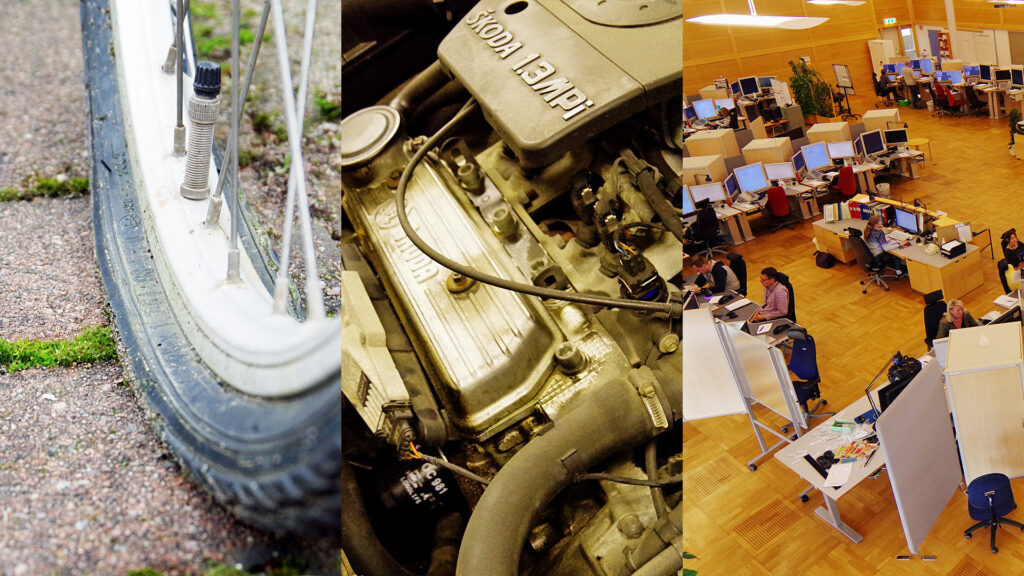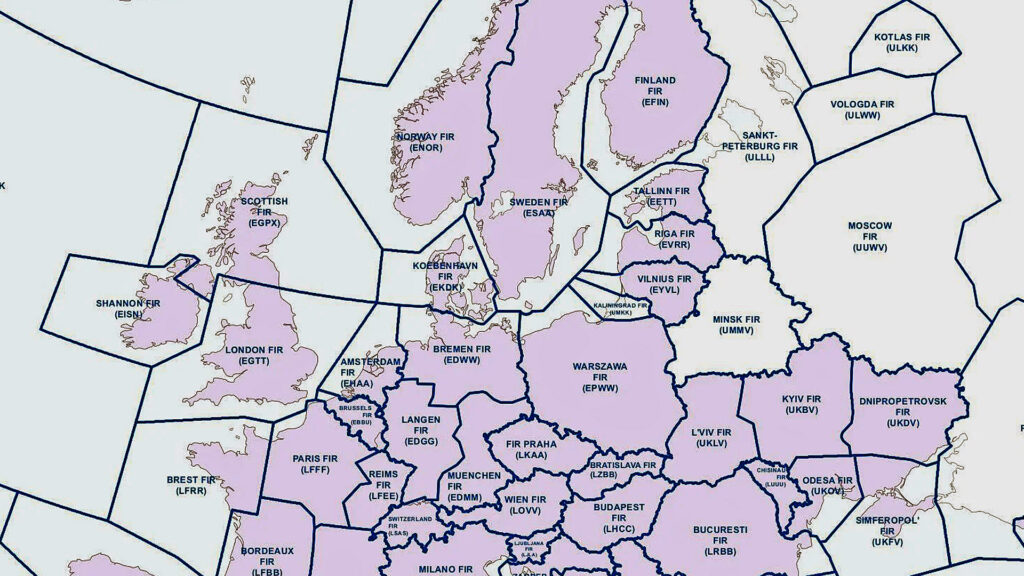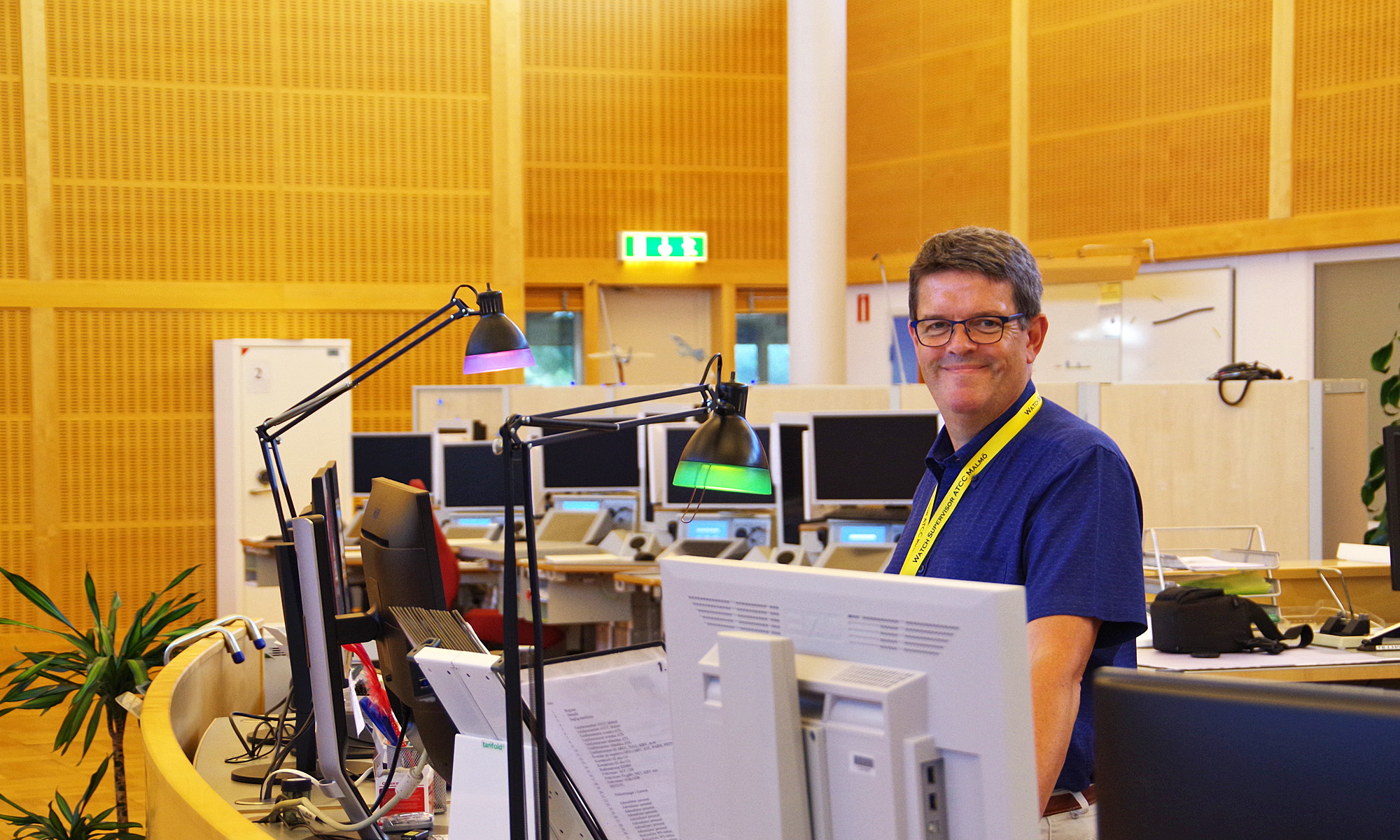In two previous parts, we looked at simple and complicated systems and at the method we use to solve problems in these systems. We also looked at how we often apply the same method for complex systems. In this part, we will look at some of the things that makes complex systems different from simple and complicated systems. To understand these differences can help us see why our standard problem-solving method is not always appropriate for complex systems.
Stability
We looked at a simple system – a bike with a flat tire – and at a complicated system – a car with engine problems. These systems are both stable. If we do not address the problems we found, the problems will remain. Then we looked at a complex system; an Air Traffic Control Centre, where we had a number of recent reports on losses of separation between aircraft approaching an airport.
A complex system is however not stable in the way a simple or complicated system is. At the ATC Centre, imagine that we do nothing to solve our separation problem. The controllers that work with this traffic, and perhaps were involved in the incidents, will probably discuss this with their colleagues. The situation is not pleasant, and they want to understand why the incidents occurred, and how they can make sure will not happen again. It is quite possible that they will develop an understanding and find a way to adjust their way of working to avoid the problem. To adapt and adjust to the situation is typical for normal work. It is certainly a plausible development; that there will be no more losses of separation – even without any action from the Centre management!
Of course, there are several other, also plausible, developments, including some more negative, with even more incidents. The point I am trying to make here is that a complex system is “alive”, constantly adapting, and developing. It is not stable.

Independency
Our simple and complicated systems – the bike and the car – are stable also in another sense. They are not affected by other systems. Fixing the flat tire on the bike will not have any effect on the car’s engine problems.
A complex system is however usually consisting of several other systems and is also connected to outside systems. These systems are typically tightly coupled, in a way that changes in one system will affect other systems. In our ATC Centre, the airspace is divided into several sectors, each sector manned by one or two controllers. Even if the incidents we saw only occurred in one sector, other sectors will be affected. One example could be that the incidents are mitigated by the controllers, by increasing safety margins. This will have an effect on co-ordinations and traffic solutions towards other sectors.
We can expand this. Our system – the ATC Centre – consists of smaller systems, but it is also a part of a larger system and it borders to other systems. Our ATC Centre is not living in splendid isolation – it is just one of many ATC Centres, most of them managed by other organisations, in other countries. One change in one sector can affect the situation in other countries!

Cause and effect
With our simple and complicated systems, we found a clear connection between cause and effect. Using our method (Plan, Do, Check) we can establish that the cause of the bike’s flat tire was a hole in the hose, and the cause of the car’s engine problems was old spark plugs.
In our complex system – the ATC Centre – we often assume that there are similar connections between cause and effect. One of the objectives of an incident investigation is to find the cause (or causes). Starting with the incident and going backwards in time it is often possible to see a chain of events leading to a point that we can declare “the root cause”. In our example, we found a new method, with issues concerning the description of it, leading to difficulties for the controllers and then to the losses of separation. That finding can however be something of an illusion.
With the bike and the car, the connection between cause and effect is obvious already before the problem. We can say, without any doubt, that a broken hose, will lead to a flat tire. And if we understand a car engine, we will know that if we do not replace the spark plugs at regular intervals, we will get engine problems.
We do not have that ability with complex systems. Of course, we could have realised that our new method might be mis-understood and that it might increase the risk for a loss of separation. This is however not the one and only possible effect. In another scenario, the controllers could have been able to adopt, there would have been no incidents, and we would continue to have a poorly described method in our system for years ahead.
I am not suggesting that there is total randomness in a complex system, but the connection between cause and effect is only obvious in hindsight, not in advance. Instead, we can talk about “emerging effects”, where a large number of factors work together in unpredictable (or at least hard-to-predict) ways.
After the problem-solving
When we solve problems, or introduce changes, with simple or complicated systems, we can be almost certain that the change is long-lasting. Our repaired bicycle tire will work fine until there is a new damage to it. Our engine will run smoothly until it is again time for the spark plugs to be replaced (with a reservation for the fact that a car’s engine is complicated enough for other parts to be able to cause problems).
When we solve problems in a complex system, it is another story. Our problem-solving might look successful and our evaluation can be positive, but a few months later we might have a reoccurrence without any obvious reasons. It can be connected to human adaptation – people can revert to older working methods, that felt easier or more efficient. It can also be an adaptation to a completely different change, but in a way that looks like reverting.
A complex system is never completely stable. It changes while we are planning a change, it changes while we implement a change, and it changes after we finalised a change. Most of that change is for the good, it is a way to make sure that the system continues to deliver what is expected, in a changing world, with limited or lacking resources, with competing and sometimes conflicting goals.
Conclusion
There is much more to be said about complex systems. I still hope that I have been able to show a few reasons why traditional ways of problem-solving, that work very well with simple and complicated systems, might not give the intended results in a complex system.
One factor is stability, or lack of stability. While we check, monitor and analyse a complex system – it changes. We implement a new change – perhaps a new method for arriving traffic – but that is not the only change to the system. As our system changes and adapts to different circumstances, we try to predict the effects. It is good to realise how difficult that can be.
In an ATC Centre, no day is the same as another day. Airlines change their aircraft, destinations and time schedules. Weather changes: winds, thunder and icing conditions and airlines adapt to this. There are also changes in the Centre itself: controllers don’t work exactly the same, and sometimes they get sick and there is a lack of resources. That will change our way of working – affecting other ATC Centres as they will affect us.
The obvious question, with all these aggravating factors, is if it is at all possible to solve problems in complex systems. In the next, and final, part I will point at some of the ideas that are to be found. Join me then!

